 Researchers demonstrate how machine learning models can predict anti-inflammatory potential of polymers, enabling faster design of immunomodulatory biomaterials for medical implants.
Researchers demonstrate how machine learning models can predict anti-inflammatory potential of polymers, enabling faster design of immunomodulatory biomaterials for medical implants.
Jan 20th, 2024
Read more
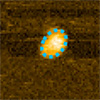 The flexibility of a protein hinge plays a crucial role in the transfer of proteins in key cell processes.
The flexibility of a protein hinge plays a crucial role in the transfer of proteins in key cell processes.
Jan 17th, 2024
Read more
 Scientists devise method to speed up observations of high-throughput microbiological process.
Scientists devise method to speed up observations of high-throughput microbiological process.
Jan 15th, 2024
Read more
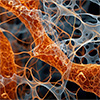 Researchers presented a novel kind of cyclic peptide that, when light-irradiated, induces the formation or dissociation of nanotubes on demand.
Researchers presented a novel kind of cyclic peptide that, when light-irradiated, induces the formation or dissociation of nanotubes on demand.
Jan 3rd, 2024
Read more
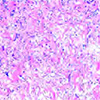 Novel corn protein scaffolds match standard tissue engineering materials in supporting human stem cells while enabling stable, customizable structures.
Novel corn protein scaffolds match standard tissue engineering materials in supporting human stem cells while enabling stable, customizable structures.
Dec 28th, 2023
Read more
 Scientists successfully harnessed artificial intelligence (AI) and deep-learning techniques to model atomic-level RNA 3D structures from primary RNA sequences. Called DRfold, this novel AI-based method improves the accuracy of RNA models by more than 70 percent, compared to traditional approaches.
Scientists successfully harnessed artificial intelligence (AI) and deep-learning techniques to model atomic-level RNA 3D structures from primary RNA sequences. Called DRfold, this novel AI-based method improves the accuracy of RNA models by more than 70 percent, compared to traditional approaches.
Dec 21st, 2023
Read more
 A new technique to clone and reassemble DNA, dubbed CReATiNG, could simplify and lower the cost to make synthetic chromosomes.
A new technique to clone and reassemble DNA, dubbed CReATiNG, could simplify and lower the cost to make synthetic chromosomes.
Dec 20th, 2023
Read more
 Scientists have created an intricate map of how the immune system functions, examining the molecular structures governing human T cells using the next-generation CRISPR tool known as base editing.
Scientists have created an intricate map of how the immune system functions, examining the molecular structures governing human T cells using the next-generation CRISPR tool known as base editing.
Dec 14th, 2023
Read more
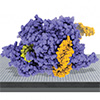 Researchers report a computational method to predict the placement of proteins on AFM substrates based on electrostatic interactions.
Researchers report a computational method to predict the placement of proteins on AFM substrates based on electrostatic interactions.
Dec 13th, 2023
Read more
 A surprisingly simple expression for enzyme activity could help guide biotechnologists.
A surprisingly simple expression for enzyme activity could help guide biotechnologists.
Dec 13th, 2023
Read more
 For the first time, it is possible to follow, step-by-step and with atomic resolution, what happens when the enzyme DNA photolyase repairs ultraviolet light-induced DNA damage.
For the first time, it is possible to follow, step-by-step and with atomic resolution, what happens when the enzyme DNA photolyase repairs ultraviolet light-induced DNA damage.
Dec 4th, 2023
Read more
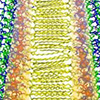 Scientists investigated a series of peptides that self-assemble into 1D layered nanostructures.
Scientists investigated a series of peptides that self-assemble into 1D layered nanostructures.
Dec 2nd, 2023
Read more
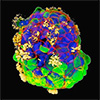 The multicellular bots move around and help heal 'wounds' created in cultured neurons
The multicellular bots move around and help heal 'wounds' created in cultured neurons
Dec 1st, 2023
Read more
 A new rotary holographic processing strategy can rapidly produce stimuli-responsive helical microswimmers of different sizes and morphologies.
A new rotary holographic processing strategy can rapidly produce stimuli-responsive helical microswimmers of different sizes and morphologies.
Nov 30th, 2023
Read more
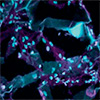 Researchers have taken connective tissue cells that have been mechanically reprogrammed to resemble stem cells and transplanted them into damaged skin. In their laboratory experiment, they were able to show that this can promote wound healing.
Researchers have taken connective tissue cells that have been mechanically reprogrammed to resemble stem cells and transplanted them into damaged skin. In their laboratory experiment, they were able to show that this can promote wound healing.
Nov 29th, 2023
Read more
 Researchers developed a new program that provides a more accurate understanding of the peptide sequences in cells. They use machine learning to help analyze the makeup of unfamiliar cells, which could lead to more personalized medicine in the treatment of cancer and other serious diseases.
Researchers developed a new program that provides a more accurate understanding of the peptide sequences in cells. They use machine learning to help analyze the makeup of unfamiliar cells, which could lead to more personalized medicine in the treatment of cancer and other serious diseases.
Nov 28th, 2023
Read more
 Synthetic biologists have developed a flexible new platform that solves part of this daunting delivery problem. Mimicking natural processes used by viruses, the delivery system binds to target cells and effectively transfers drugs inside.
Synthetic biologists have developed a flexible new platform that solves part of this daunting delivery problem. Mimicking natural processes used by viruses, the delivery system binds to target cells and effectively transfers drugs inside.
Nov 27th, 2023
Read more
 A groundbreaking study sheds new light on the evolution of the coronavirus and its variants of concern by analyzing the behavior of atoms in the proteins at the interface between the virus and humans.
A groundbreaking study sheds new light on the evolution of the coronavirus and its variants of concern by analyzing the behavior of atoms in the proteins at the interface between the virus and humans.
Nov 27th, 2023
Read more
 Researchers demonstrate how machine learning models can predict anti-inflammatory potential of polymers, enabling faster design of immunomodulatory biomaterials for medical implants.
Researchers demonstrate how machine learning models can predict anti-inflammatory potential of polymers, enabling faster design of immunomodulatory biomaterials for medical implants.
 Subscribe to our Biotechnology News feed
Subscribe to our Biotechnology News feed















